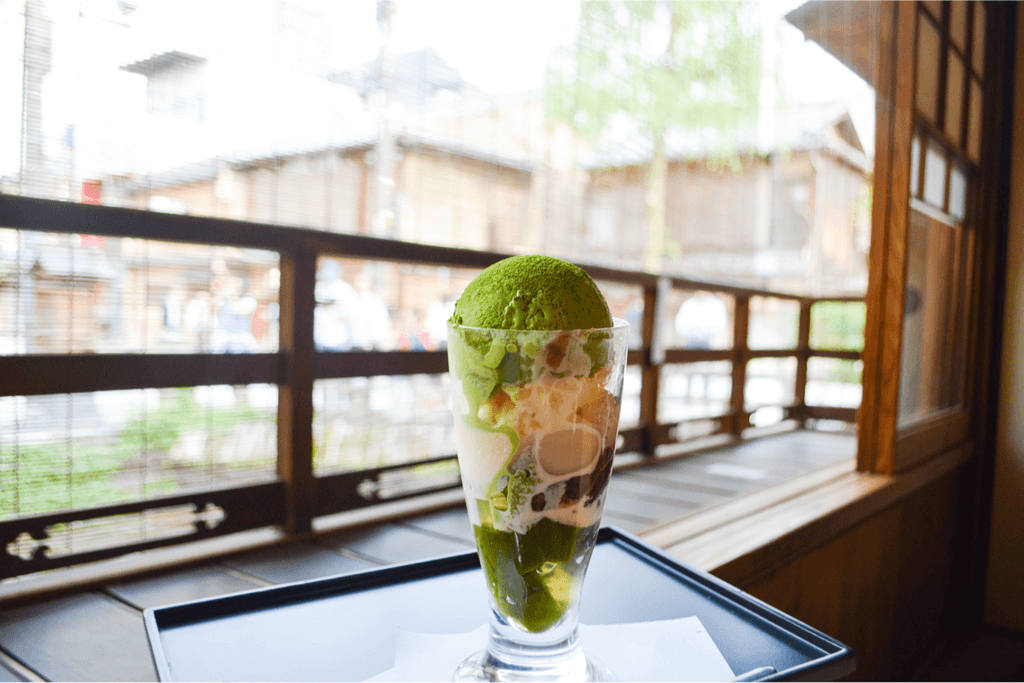Kyoto is one of the most popular destinations in Japan as it is a city that blends the best of Japanese culture, history, and natural landscapes. Apart from that, Kyoto is also an excellent destination to satisfy your sweet tooth as it offers some of the best Japanese wagashi – traditional Japanese sweets.
Kyoto sweets produce an elegant appearance and taste that is alive with the flavors, history, and culture of Kyoto. Here are some of our favorite Japanese sweets from Kyoto that you should try at least once!
Table of Contents
ToggleYatsuhashi
One of the best-known meibutsu (famous regional products) from Kyoto, they are the classic souvenir sweets of Japan’s ancient capital. Since it’s a very well-known gift from the city, you can purchase it even at international airports in Japan.
Making Yatsuhashi involves combining rice flour, sugar, and cinnamon. The mixture is then steamed and baked to achieve a crispy, cookie-like texture, similar to thin Japanese rice crackers or senbei. People typically fill it with red bean paste and incorporate various flavors such as matcha, black sesame, cherry blossoms, green apple, chocolate, mango, peach, etc. Yatsuhashi can have a chocolate coating or a green tea flavor. Most types of Yatsuhashi complement tea exceptionally well.
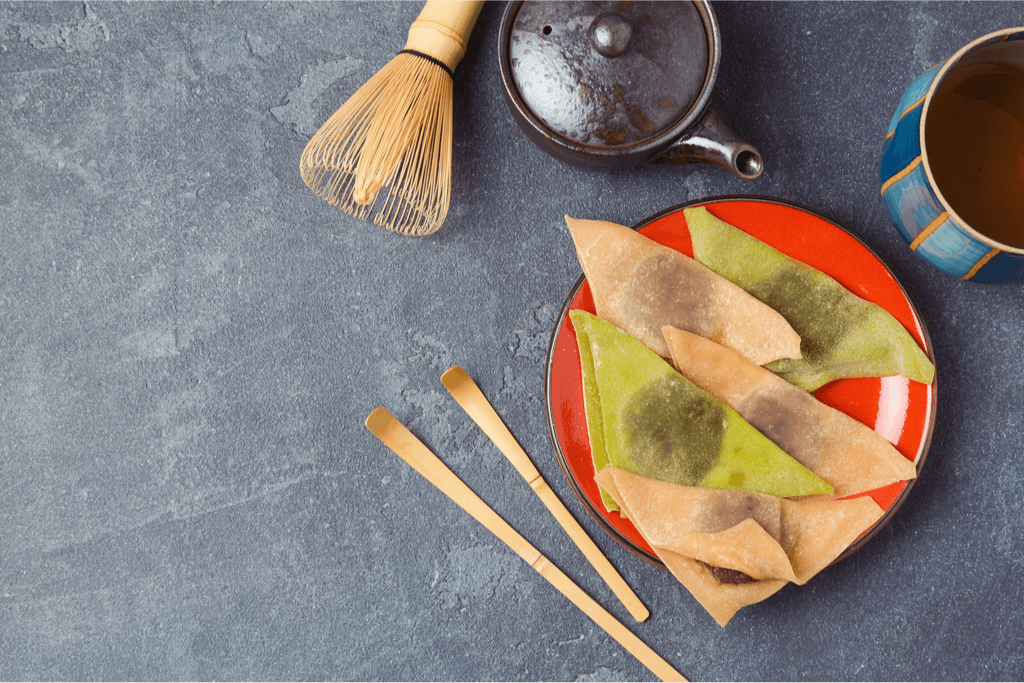
In addition to its delicious taste, yatsuhashi has a deep origin connected to the influence of a blind monk named Yatsuhashi Kengyo. According to legend, Yatsuhashi Kengyo was a musician and humble man who taught his students not to waste any sticky rice at the bottom of the pot. A few years after his passing, the townspeople paid tribute to his musical life and character by creating a snack shaped like the curved surface of Kengyo’s koto instrument.
Mitarashi Dango
Mitarashi dango are skewered rice dumplings paired with an irresistible sweet soy sauce glaze known for its glassy look and burnt fragrance.
They originated from the Kamo Mitarashi Tea House in Kyoto. The name mitarashi comes from a reference to the bubbles of a mitarashi, or a font of purifying water placed at the entrance of a shrine, while mochi dango means dumplings.
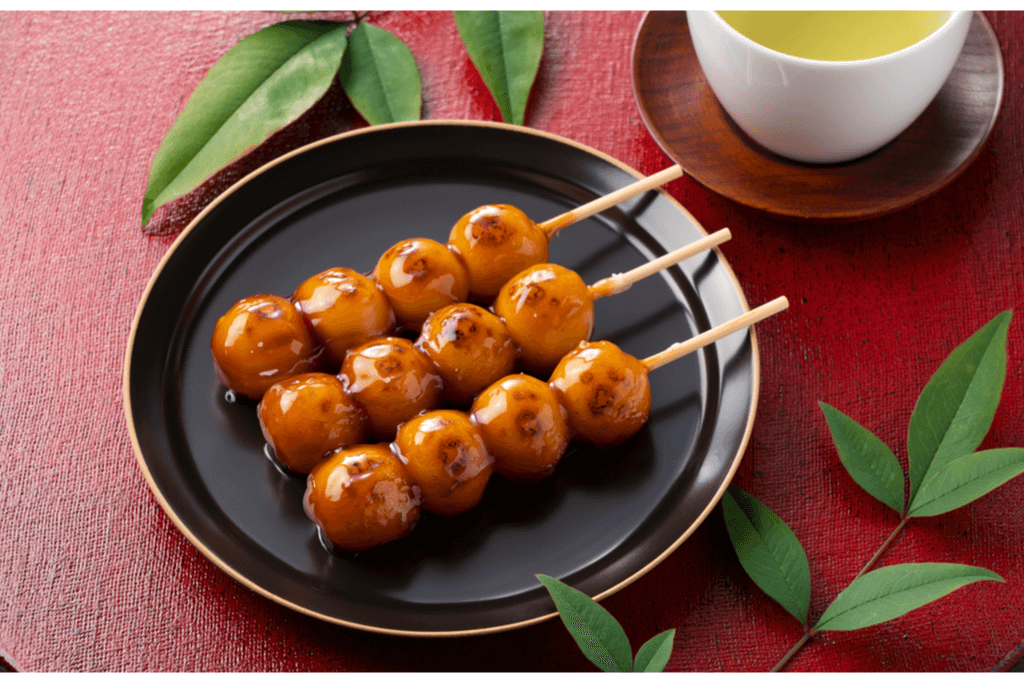
Skewering three to five dumplings on a bamboo stick characterizes the preparation of mitarashi dango. While it’s famous as a classic spring treat, people enjoy mitarashi dango throughout the year for its contrasting textures and flavors.
The dumplings are chewy, mildly sweet, and filled with umami (essence of deliciousness) flavor. They also get a hint of char from grilling, and when we brush over the glaze, each bite is gooey, savory, and satisfying without being overly sweet. As a result, they make a fun, delicious snack with a hot cup of green tea.
Yokan
People make yokan, a traditional Japanese jelly candy, using red (and sometimes white) bean paste, sugar, and agar-agar, which imparts its gel-like texture. Typically, it is shaped into blocks or bars and enjoyed by slicing into pieces.
Overall, it is one of the most traditional Japanese sweets and has a long history. Being a truly traditional Japanese treat, yokan dates back to the Edo period (1603-1868). Zen Buddhists, who were vegetarian, could eat yokan because it didn’t use gelatin, which comes from animal bones.
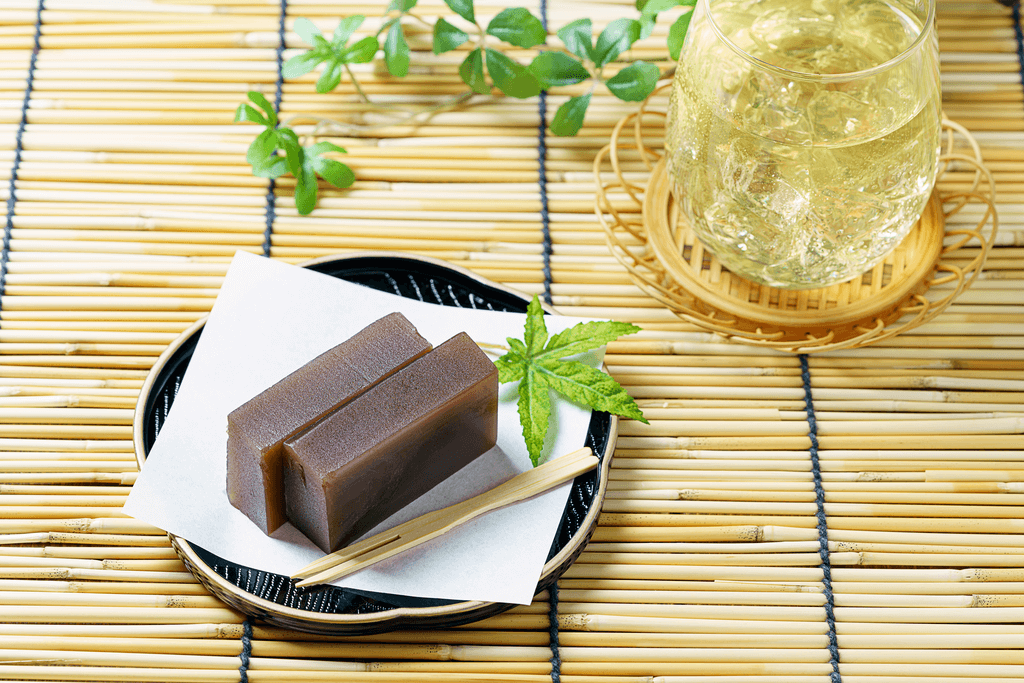
Yokan originated as a dish enjoyed in China before the first century, and it transformed into a traditional Japanese confectionery with various available variations. There are three types of yokan, distinguished by their preparation methods. However, the most popular variety, neri-yokan, is crafted using more agar, resulting in a stiffer texture.
A softer version of yokan, mizu-yokan, utilizes less agar and more water, imparting a smoother and lighter texture. This treat is commonly available in the summer, and people appreciate it for its cool appearance and refreshing taste. Mushi-yokan comes from solidifying yokan with flour or kudzu powder. Typically, people make this type of dessert using a steamer, which becomes a popular treat that one can easily prepare and enjoy at home.
Craving some delicious Japanese sweets? Check out Sakuraco! Sakuraco delivers traditional Japanese snacks, teas, sweets, and snacks from local Japanese makers directly to your door so you can get the best of Kyoto sweets in the comfort of your home!
Hikichigiri
People in the imperial court named the Japanese sweet hikichigiri (pull apart), made from mochi and sweet bean paste, when there weren’t enough people to roll mochi (rice cakes). They decided to tear them apart to save time.
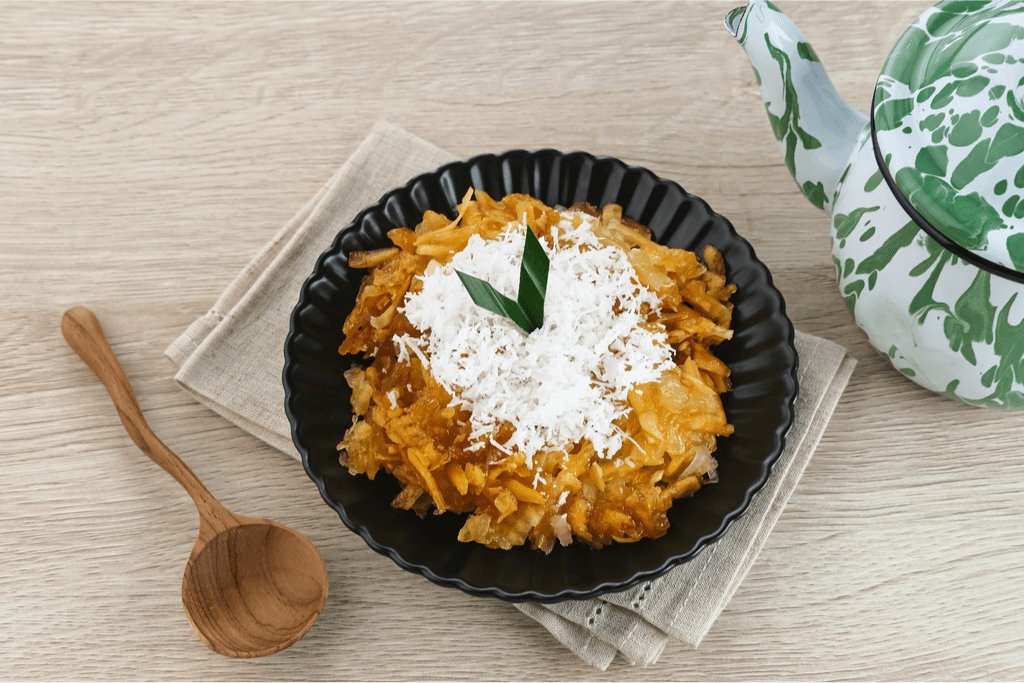
To create hikichigiri, one spreads out a white mochi circle, forms a depression in the center, and adds a handle-shaped piece to one edge. Sweet bean paste is then placed in the depression. The resulting hikichigiri rice cake boasts a chewy yet soft texture and holds significance as one of the important sweets during festivals in Kyoto.
Kyo Baum
Kyo Baum is a baumkuchen (tree cake) made by using soymilk and matcha, giving it a colorful gradation of green and white. It’s soft and moist with a luxurious scent of Uji matcha, perfect for teatime and coffee breaks.
Generally, the moist, rich cake shaped like a ring features a two-color design. It’s covered with a thin layer of sugar syrup and is available in 3 different sizes (half of 3.5 cm roll, 3.5 cm roll, and 5.25 cm roll). Being beautiful in appearance and having a delightful taste, Kyo Baum makes the perfect Kyoto souvenir.
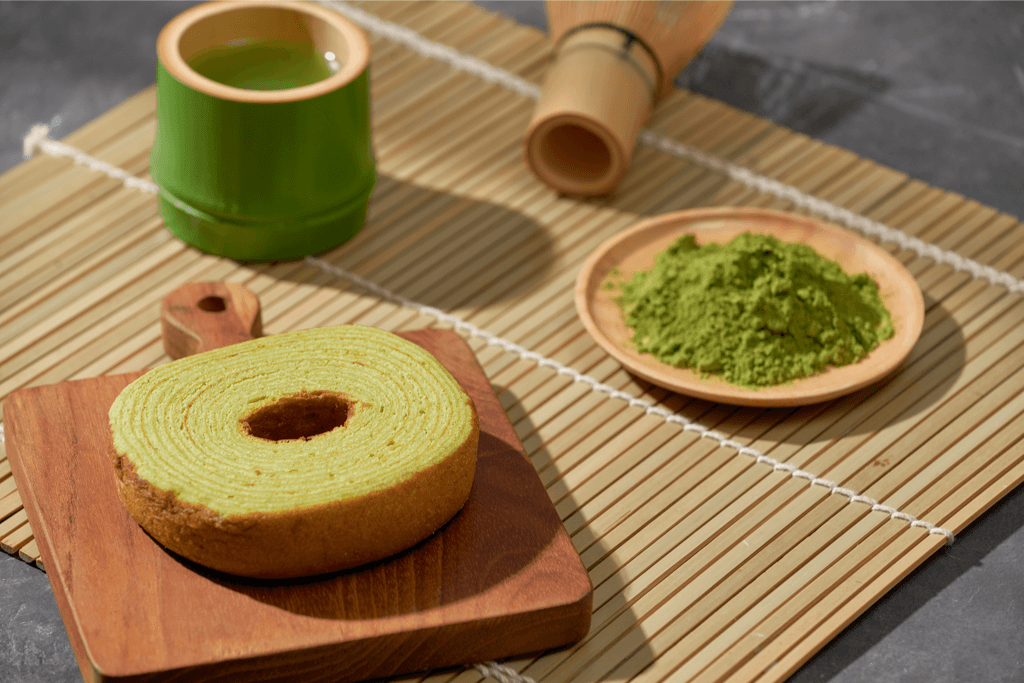
Namafu Dengaku
Namafu, a traditional Japanese delicacy, involves grilling highly refined wheat gluten and coating it with miso paste. The process includes combining it with short-grained mochi rice flour before steaming. This fresh gluten cake has no distinct flavor, as according to traditional Japanese cooking, no single flavor should take a central stage, but that altogether makes a unique and delightful treat. You can savor it with sweet miso sauce in Kyoto.

Mizu Manju
During the summer in Japan, people traditionally enjoy a dessert known as mizu manju. The name ‘mizu’ translates to water; true to its name, these cakes have a refreshing appearance. The outermost layer of mizu manju uses kudzu starch, a traditional starch extracted from the roots of the kudzu plant.
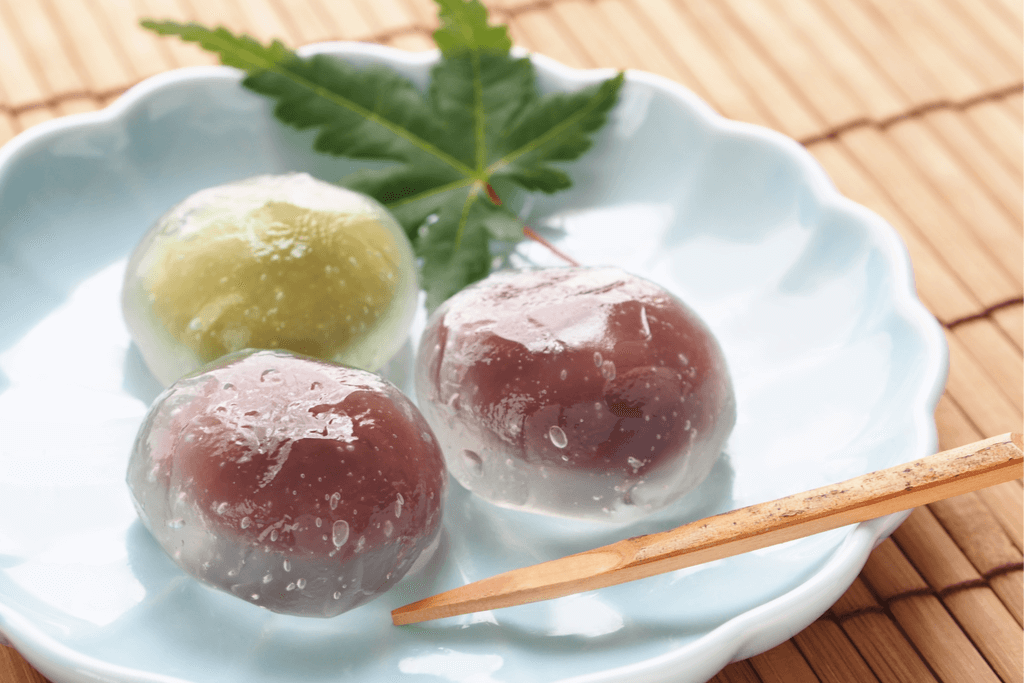
This starch gives the cake a translucent, jelly-like appearance. Generally, vendors usually sell mizu manju in transparent plastic cups, allowing customers to visually experience the coolness. As a result, the sweet red bean paste fills mizu manju, perfectly balancing the refreshing kuzu.
Ajari Mochi
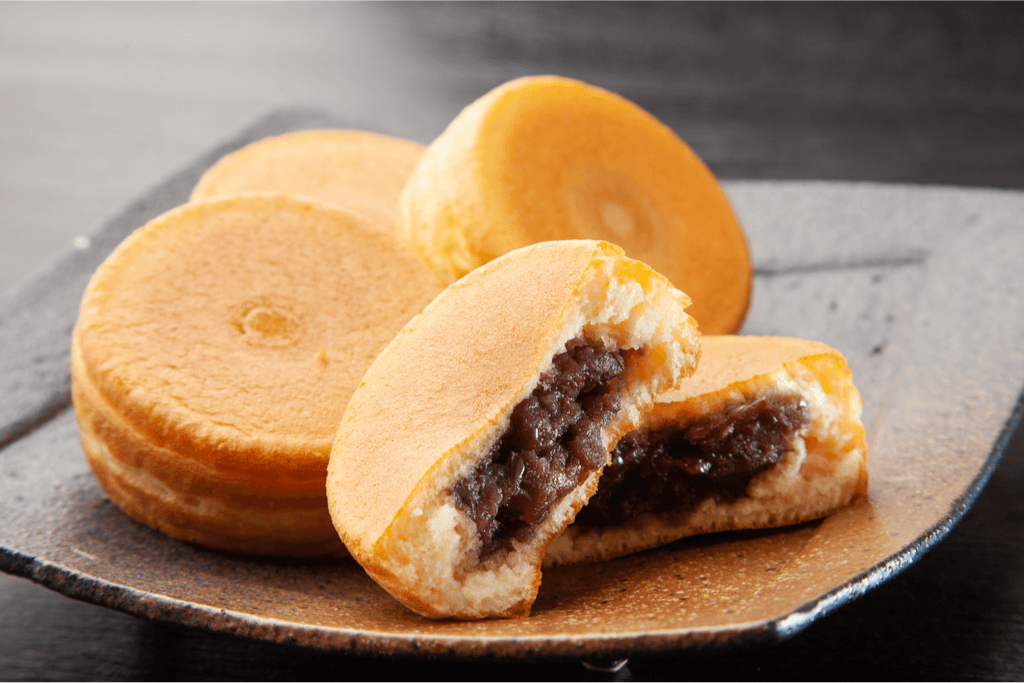
Originating from Kyoto, ajari mochi is a traditional Japanese confection in the shape of a monk’s bamboo hat, reflecting the abundance of temples and shrines in the city. This confection entails partially baking a sweet filling and enveloping it in mochi dough. The dough incorporates several ingredients, including red bean paste, and uses glutinous rice, akin to regular mochi. However, adding ingredients like egg and powdered sugar imparts a more bun-like texture.
Kompeito
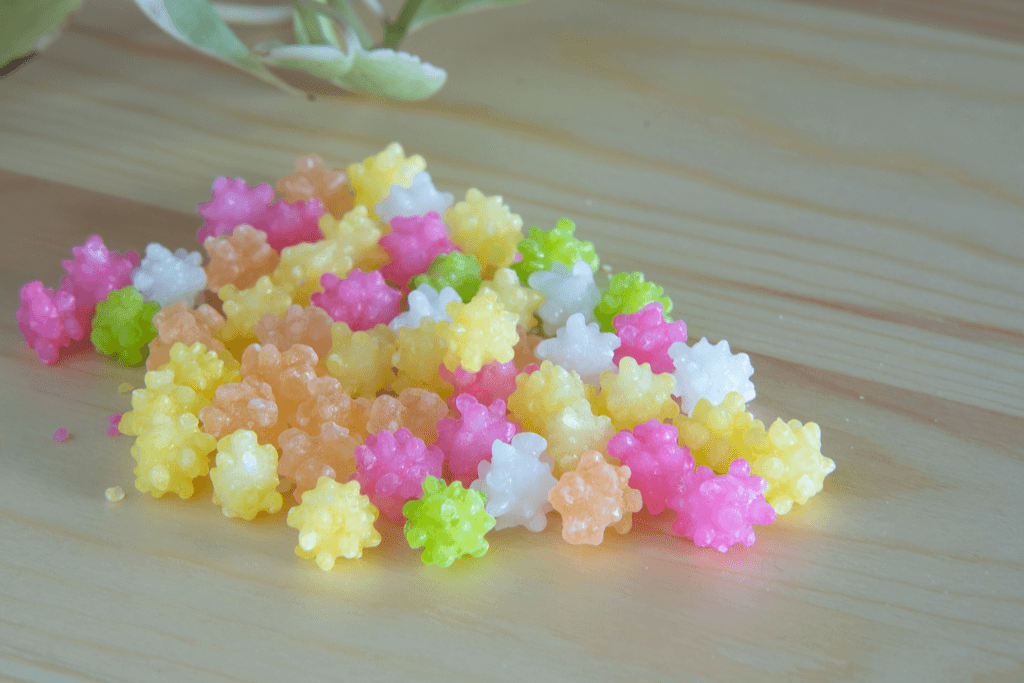
Kompeito is a traditional Japanese sweet that uses sugar. It’s characterized by its eye-catching, colorful appearance and is especially popular with children. Initially, Portuguese traders introduced this sweet delight to Japan in the 16th century. Kompeito uses a lot of sugar, which makes it very expensive. The making of Kompeito traditionally requires a lot of time and labor. It usually takes about one to two weeks to form its unique shape.
Kitsune Senbei
The kitsune senbei (fox rice cracker) is a specialty souvenir that can be found at the entrance to the famous Fushimi Inari Taisha shrine. Kitsune senbei are a unique and rare Kyoto sweet because artisans bake them individually using an iron mold.
The senbei batter incorporates white miso, which gives it its orange color after baking. Additionally, the mild, sweet flavor of the white miso forms an exquisite combination with the fragrant sesame. The cracker is also fairly thick and can serve as a hearty snack that’s hard to eat once you bite it.

All in all, Kyoto sweets are an amazing blend of flavor, history, and style! It’s an amazing snack you can enjoy worldwide! Have you tried any of the Kyoto sweets listed above? Which is your favorite? Let us know in the comments below!

